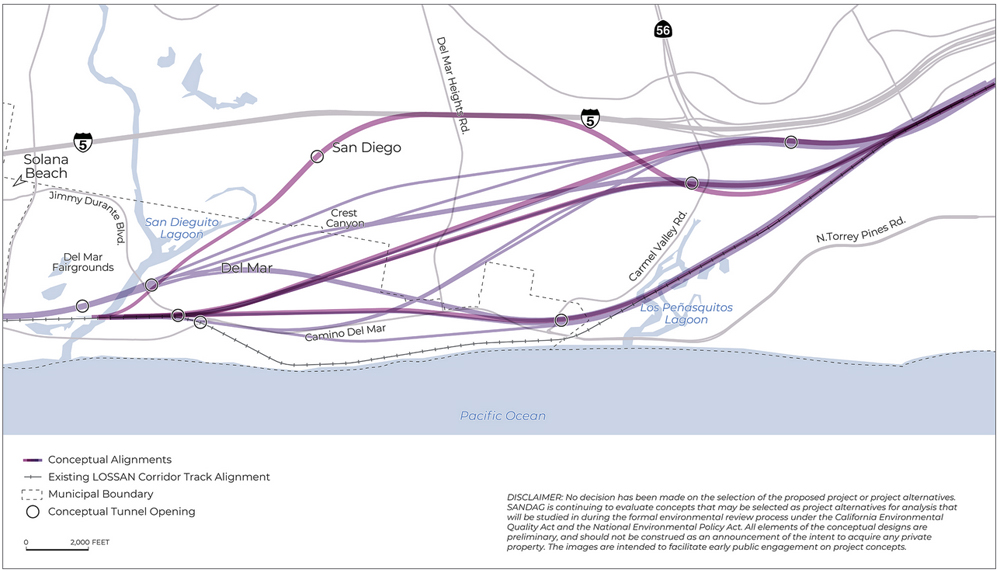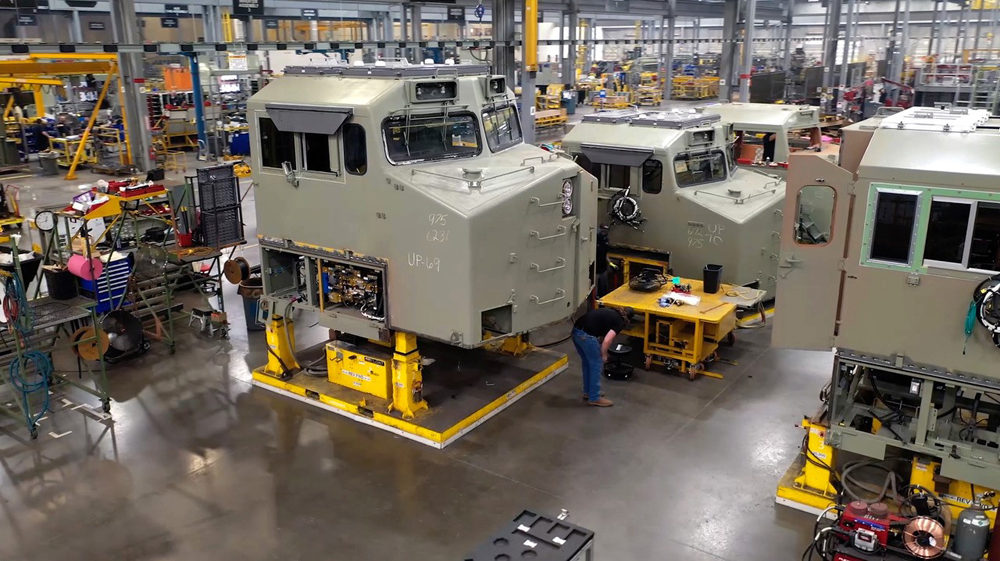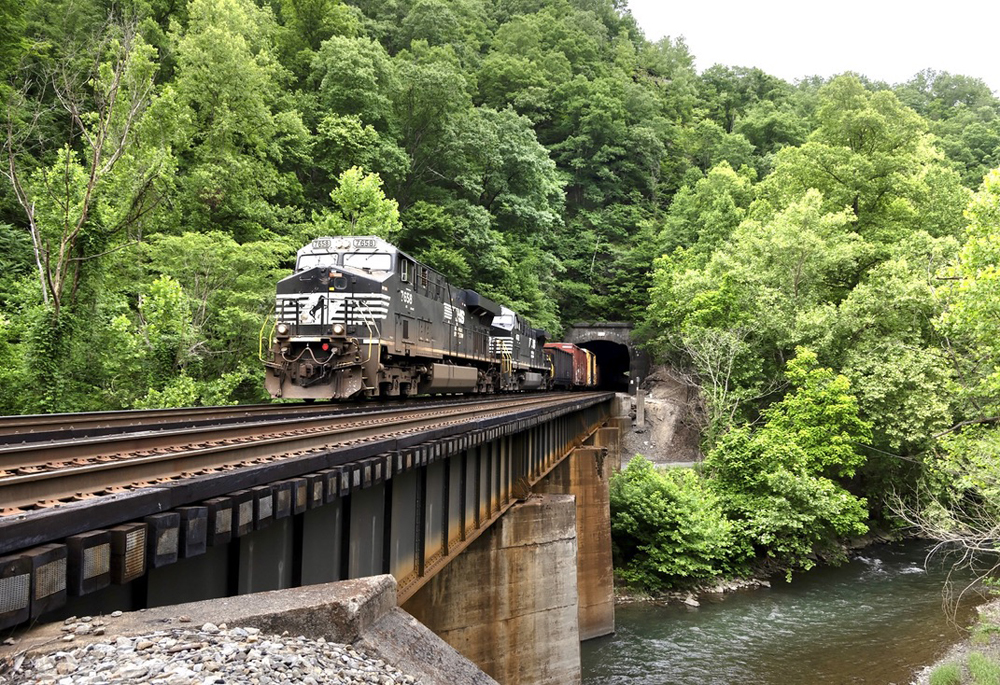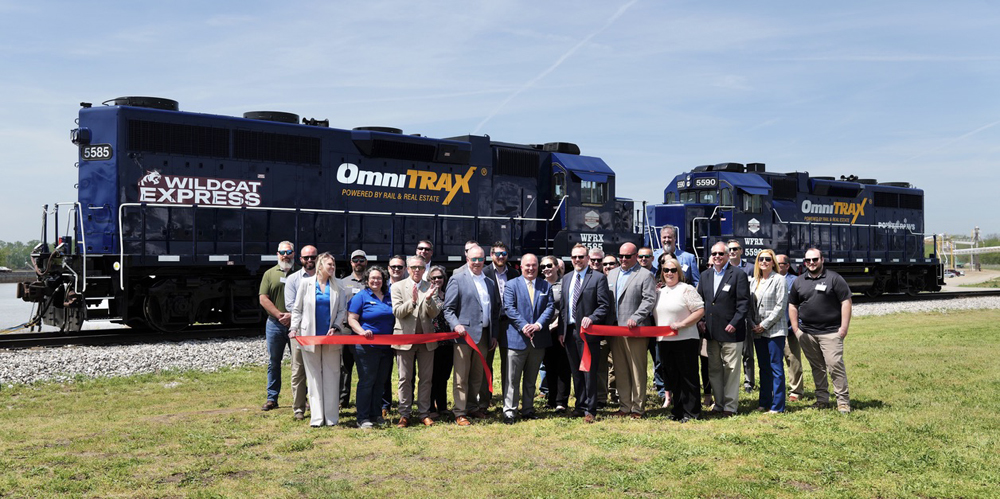
DEL MAR, Calif. — Proposed routes for a tunnel to replace the rail line along the Del Mar bluffs, which at one time had been narrowed to two options, are now back to a total of 11 options in the wake of objections by Del Mar residents, the San Diego Union-Tribune reports.
The multi-billion dollar project would move about 1.6 miles of the former Santa Fe Surf Line track, used by Coaster commuter trains, Amtrak’s Pacific Surfliners, and BNSF freight traffic, off the bluffs, where it faces long-term erosion problems. The line would be relocated inland, but would tunnel under the upscale community of Del Mar — and resident objections to tunnels that would pass under their houses have led the San Diego Association of Governments, or SANDAG, to back away from not only the two options it had previously cited, but an earlier group of five potential routes.
“Back in 2017, we said there’s five lines on a map,” Robin Wagner, SANDAG marketing and communications manager, told a recent community meeting, according to the Union-Tribune. “A few years later, we did an analysis and said, Ok, now we’ve got two lines on a map. And then we came back this year and said, no, nothing is decided, we’ve got a whole bunch of lines on a map.” The organization’s planners are listening to more community input and doing more analysis, and won’t be choosing a final alignment any time soon.
The Del Mar City Council has called for the tunnel to follow the route of Interstate 5 and pass beneath the Del Mar Fairgrounds, away from more residential areais, but the association which runs the fairgrounds opposes taking the rail lines through that state-owned property. SANDAG said its study found an alignment through the fairgrounds is not feasible.
SANDAG received $300 million in state funding last year to begin planning for the tunnel project [see “San Diego planning agency accepts funds …,” Trains News Wire, Sept. 12, 2022]. But the project itself has been estimated to cost up to $4 billion. The agency continues to contend that final design on the tunnel could begin in 2026, with constriction starting in 2028. But those dates seem optimistic given the current number of route options — and the likelihood of legal action by Del Mar or residents regardless of the final decision.
SANDAG information on the project is available here.














The one big control factor not discussed is what is the geology of each alternative? Irrespective of the residents’ objections, if the best soil & rock is under the ritzy neighborhood, and all of the others are sand, then under the ritzy ‘hood it shall go. Also, not knowing the topology or geology again, if it’s far enough below ground, no effects will be felt at the surface.
Classic NIMBYism! If they do not want it under their homes and neighborhood, then let them pay the difference!
MY 8 year old grandson will be retired before this is even approved, let alone built.
Ridiculous!
“The solution to pollution is dilution.” And the more lines diluting the map means the greater likelihood of nothing being done.
The superhero of all NIMBYism efforts. Or in another world, “how many times can we relocate a railroad in its 100 year lifetime”
Out of curiosity I pulled up some aerial imagery of the area in question and I do not envy the engineers and planners that have to get this project approved. Looking at the proposed routes I do wonder if a few routes have been included as intentional “toss out” alternatives just to prove that desired route is the least of all evils.
Starting from scratch, the Manhattan project took about two and a half years, from opening a lab in New York City to dropping two entrely different designs of bombs on Japan.
In parallel, the development of the B-29 which dropped the bombs took slightly longer.
From a peace-time military with hardly enough manpower to feed the horses, to winning all-out wars on two continents by air land and sea, took about five years.
Turning the SoCal coast from fishing villages to a powerhouse of naval bases and war industry took a year or so.
The environmental reviews and court cases in San Diego County will drag on for how long before construction begins? Anyone’s guess.
Oh, and let’s go some miles further north. How long until CalHSR even chooses a route, let alone design and construction, for the crucial LA – Burbank – Bakersfield segment.
just tell them it’s a water tunnel so they can water their lawns, wash their cars, and green their golf courses. Build it and lay the tracks at the last minute. Of course, they all believe they will be dead by climate change, so the project is a moot point.
Manhattan Project began in Chicago at the University of Chicago. That facility continues to today as Argonne National Laboratory.
World’s first nuclear reaction also occurred in Chicago at Stagg Field on East 57th.